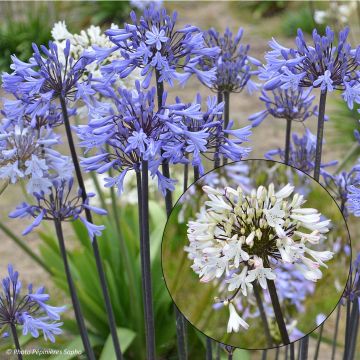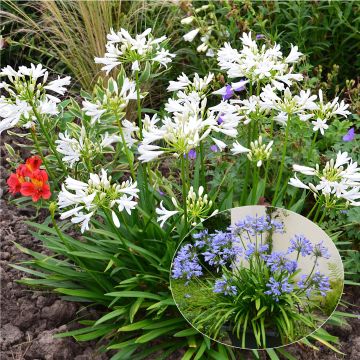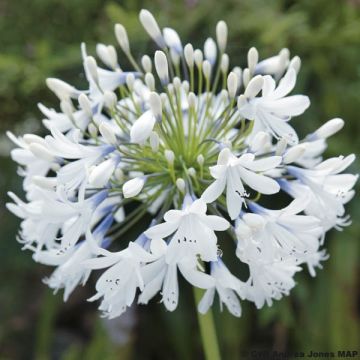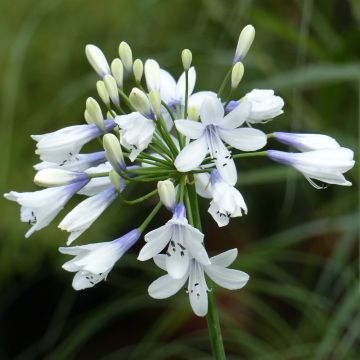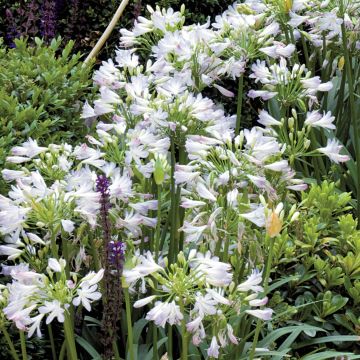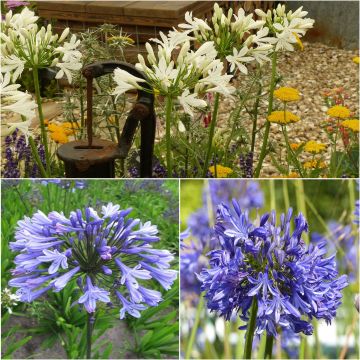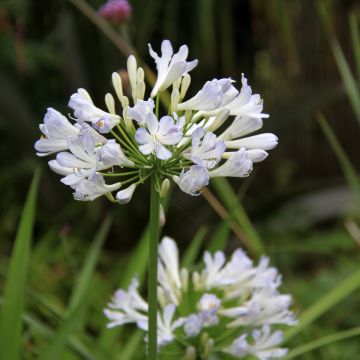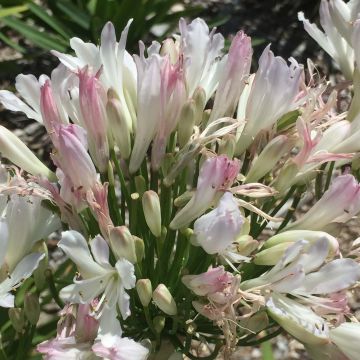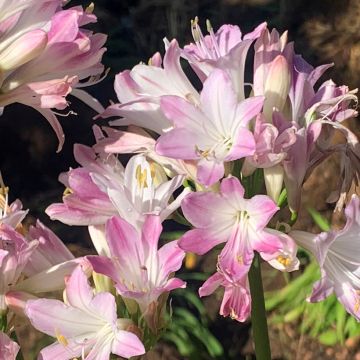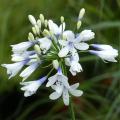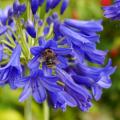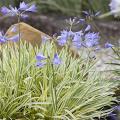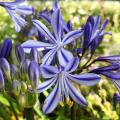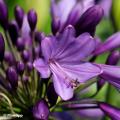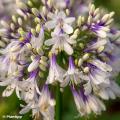Two-tone Agapanthus
Would this plant suit my garden? Set up your Plantfit profile →
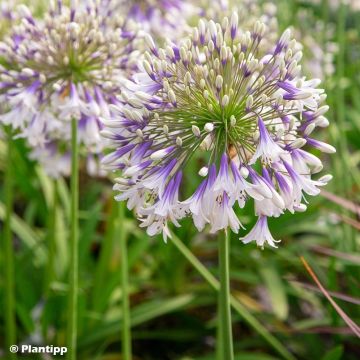
Available in 3 sizes
Available in 0 sizes
Available in 0 sizes
Available in 3 sizes
Available in 4 sizes
Available in 0 sizes
Available in 2 sizes
Available in 0 sizes
Available in 1 sizes
Available in 3 sizes
Available in 1 sizes
A selection of Agapanthus with bicoloured flowers. While Agapanthus is known for its magnificent blue flowers in umbels, there are varieties such as the Agapanthus 'Twister' or 'Fireworks' that stand out with their bicoloured florets. Their more or less spherical inflorescences are composed of flowers whose blue base contrasts with the white petals. In the 'Enigma' Agapanthus, this contrast is even more pronounced on the flowers whose base is almost violet. With their refreshing flowering, a true summer fireworks display, these bicoloured Agapanthus are among the most beautiful perennials of the summer. The flowering stems, which vary in height from 40cm (16in) to over 1m (3ft), dominate a tuft of luxuriant foliage that can be deciduous or evergreen depending on the varieties. Agapanthus are also plants of South African origin, avid for sun and heat, and therefore more or less resistant to frost. They are preferably grown in the ground or in pots depending on the regions. Over time, Agapanthus clumps will become more and more generous, and their presence in the garden or on the terrace is comparable to that of a beautiful bush. We offer you the widest choice of bicoloured Agapanthus flowers.
Haven't found what you were looking for?





































